

 观看
观看 我要
我要 我要
我要
|
General Chair
|
||||
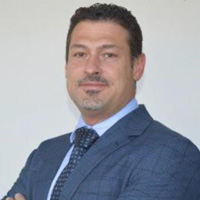 |
||||
|
Giuseppe Carbone University of Calabria, Italy |
||||
|
Conference Chairs
|
||||
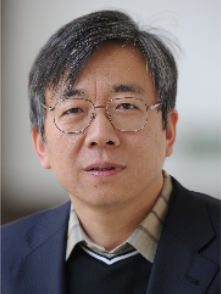 |
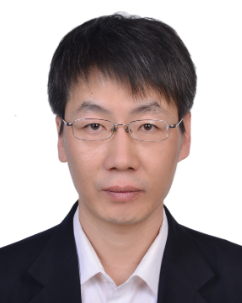 |
|||
|
Junhui Hu Nanjing University of Aeronautics and Astronautics, China |
Yuwen Sun Dalian University of Technology, China |
|||
|
Program Chairs
|
||||
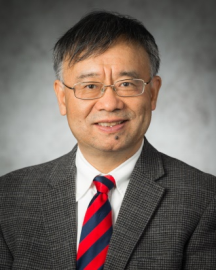 |
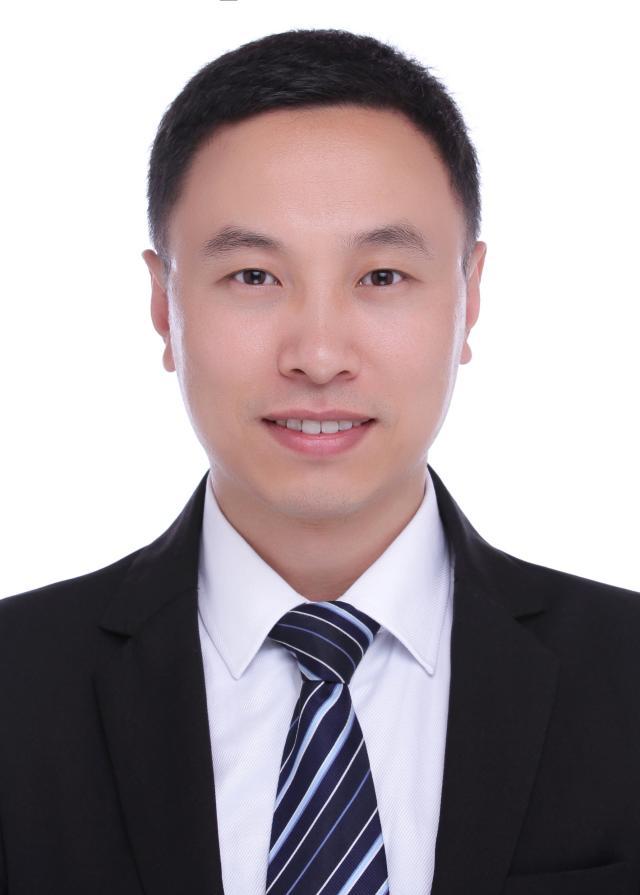 |
 |
||
|
Ji Wang Ningbo University, China |
Jianqi An China University of Geosciences, Wuhan, China |
Huafeng Ding China University of Geosciences, Wuhan, China
|
||
 |
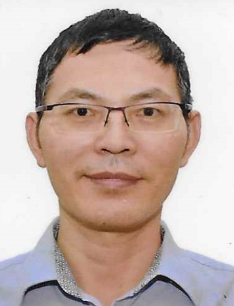 |
 |
||
|
Fawad Inam University of East London, UK |
Yinquan Yu East China Jiao Tong University, China |
Maria Pia Fanti Polytechnic University of Bari, Italy |
||
| Program Co-Chair | ||||
 |
||||
|
Shuangji Yao Yanshan University, China |
||||
|
|
||||
|
Publication Chair
|
||||
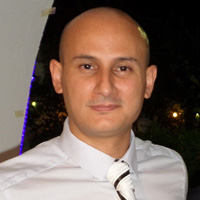 |
||||
|
Med Amine LARIBI University of Poitiers, France |
|
会议网站:http://www.samde.org/
会议日期:2023年12月8-10日
召开地点:南京
截稿时间:2023年11月10日
录用通知:投稿后2周
收录检索:EI, Scopus
主办单位:南京航空航天大学、大连理工大学
Keynote Speaker Ⅰ

Prof. Xingjian Jing
City University of Hong Kong, China
Speech Title: Analysis and Design of Nonlinear Damping and its Applications
Abstract: Nonlinearity can take an important and critical role in engineering systems and thus cannot be simply ignored in structural design, dynamic response analysis, and parameter selection. A key issue is how to analyze and design potential nonlinearities introduced to or inherent in a system of under study, which is greatly demanded in many practical applications involving vibration control, energy harvesting, sensor systems and robots etc. This talk will present up-to-date development on nonlinear damping analysis and design based on a novel approach recently established, i.e., the X-shaped structure/mechanism method. It is shown that, superior nonlinear damping properties can be obtained with this X-shaped structure; a novel X-absorber is thus developed which can significantly enhance overall vibration suppression performance and robust subject to change of parameters, excitations, and/or nonlinearities; and a compact X-mount can also be designed with special oblique springs for wider quasi-zero-stiffness (QZS) range. These results definitely provide unique insights into technical innovation of passive or active vibration control in various engineering practices.
Biography: Xingjian Jing is now a full professor with the Department of Mechanical Engineering, City University of Hong Kong (CityU). Before joining in CityU, he was a Research Fellow with the Institute of Sound and Vibration Research, University of Southampton, followed by assistant and associate professor with Hong Kong Polytechnic University. His current research interests are generally related to nonlinear dynamics, vibration, control and robots, with a focus on exploring and exploiting nonlinear benefits in engineering with advanced theory, methods and applications. Prof Jing is the recipient of 2016 IEEE SMC Andrew P. Sage Best Transactions Paper Award, 2017 TechConnect World Innovation Award in US, 2017 EASD Senior Research Prize in Europe, 2017 the First Prize of HK Construction Industry Council Innovation Award, and 2019 HKIE Outstanding Paper Award etc. He has published 200+ refereed papers with 30+ patents filed in China and US. He currently serves as Associate Editors of Mechanical Systems and Signal Processing, IEEE Transactions on Industrial Electronics, and IEEE Transactions on Systems Man Cybernetics-Systems. He is the Session EiC of Biomimetics and Frontier in Mechanical Engineering. He also served as Technical Editor of IEEE/ASME Transactions on Mechatronics during 2015-2020. He was lead editors of special issues on "Exploring Nonlinear Benefits in Engineering" published in Mechanical Systems and Signal Processing during 2018-2019 and 2021-2022, and the chair or co-chairs of several international conferences or conference sessions (e.g., CMAME 2018, ACMAE 2019, ICANDVC2021-2023).
Keynote Speaker Ⅱ
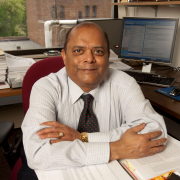
Prof. Ramesh K. Agarwal
Fellow of AIAA, ASME, IEEE, SAE, AAAS, APS, ASEE
Washington University, USA
Speech Title: Recent Developments in Composite Materials, Structures and Additive Manufacturing for Aircraft Applications
Abstract: In recent years, there has been emphasis on "Green Aviation" with the dual aims of reducing the energy consumption as well as emissions. Several new concepts for the aircraft have been proposed to reduce drag, improve engine efficiency, and reduce mass. Majority of the wing-tube transport aircraft in service today are very efficient high speed air vehicles equipped with high bypass jet engines. Since early 1960s most improvements in aircraft efficiency have come from advanced turbofan propulsion technology (by 40 %) and improved aerodynamics to increase the Lift/Drag (by 15%); however, the structural efficiency of the aluminum aircraft did not change much because of limited emphasis on considerations of novel materials, structures, and manufacturing processes. In recent years, reduction of aircraft mass has become one of the major drivers in developing new aircraft design concepts, novel materials and manufacturing processes without affecting the intrinsic qualities, namely the safety, reliability, durability and comfort. As a result, the metal composites based on textile-reinforced polymers that are locally blended with metal elements are being investigated for aircraft structures. Additionally, in the near future a tremendous leap in material morphologies is expected from intermediate components such as solid plates and slender beams that are assembled and joined mechanically to flexible bundles of fibers, which are then transformed into integral three-dimensional structures via both the traditional textile manufacturing and modern fiber placement machinery. These textile structures are impregnated ("pre", "in situ" or "post"- before, during or after molding) and finally solidified into ultra-modern integral multipart and multifunctional solid lightweight composite structures. This review will describe these developments that will transform the ‘state of the art’ aircraft concepts into more efficient (more pay-load per unit weight and per dollar) transport, both by increasing the structural simplicity and efficiency, and by a more straightforward use of modern materials and processes. In addition, to address many challenges of "Green Aviation". nearly a decade ago NASA launched an initiative called the "Environmentally Responsible Aviation (ERA)". In this initiative, Blended-Wing-Body (BWB) aircraft and other X-planes are being considered for a long-haul transport aircraft. BWB provides many aerodynamic advantages; however it presents structural challenges due to the noncircular cross section of the center part of its fuselage. Although significantly lighter than the conventional aluminum structures, even the most efficient composite primary structures used in today’s state-of-the-art aircraft are not adequate to overcome the weight and cost penalties introduced by the highly contoured airframe of the BWB. In the pressurized cabin regions where the design is primarily driven by the out-of-plane loading considerations and where secondary bending stresses are developed, a traditional layered material system would require thousands of mechanical attachments to suppress delaminations and to join structural elements, ultimately leading to fastener pull-through problems in the thin gauge skins. Furthermore, a conventional composite solution for BWB would entail high manufacturing costs due to its highly contoured airframe. Also, an effective BWB structure must operate in out-of-plane loading scenarios while simultaneously meeting the arduous producibility requirements inherent in building the highly contoured airframe. In addition to the secondary bending stresses experienced during pressurization, another key difference in the BWB shell is the unique biaxial loading pattern that occurs during maneuver loading conditions. It is important to capture such attributes to overcome the inherent weight penalties of the BWB noncircular pressure cabin. To address these issues, scientists at NASA and the Boeing Company are working together to develop a new structural concept called the pultruded rod stitched efficient unitized structure (PRSEUS). This concept is being analytically and experimentally evaluated using a building block approach that assesses the fundamental structural responses in representative loading environments. This presentation will also review the current status of PRSEUS. Furthermore, 3-D printing and additive manufacturing are emerging as very promising techniques for fabrication of composite parts. This review will also address the state of the art of these technologies as they relate to the fabrication of some aircraft parts.
Biography: Professor Ramesh K. Agarwal is the William Palm Professor of Engineering in the department of Mechanical Engineering and Materials Science at Washington University in St. Louis. From 1994 to 2001, he was the Sam Bloomfield Distinguished Professor and Executive Director of the National Institute for Aviation Research at Wichita State University in Kansas. From 1978 to 1994, he was the Program Director and McDonnell Douglas Fellow at McDonnell Douglas Research Laboratories in St. Louis. Dr. Agarwal received Ph.D in Aeronautical Sciences from Stanford University in 1975, M.S. in Aeronautical Engineering from the University of Minnesota in 1969 and B.S. in Mechanical Engineering from Indian Institute of Technology, Kharagpur, India in 1968. Over a period of 45 years, he has worked in several disciplines within mechanical & aerospace engineering, and energy and environment which include computational fluid dynamics, computational electromagnetics and acoustics, control theory, multidisciplinary design and optimization, turbomachinery and pumps, chemical looping combustion, carbon capture and sequestration, and wind energy. He is the author and coauthor of over 600 publications. He has given many plenary, keynote and invited lectures at various national and international conferences worldwide in over sixty countries. He is a Fellow of 28 professional societies including American Institute of Aeronautics and Astronautics (AIAA), American Society of Mechanical Engineers (ASME), Institute of Electrical and Electronics Engineers (IEEE), Society of Automotive Engineers (SAE), American Association for Advancement of Science (AAAS), American Physical Society (APS) and American Society for Engineering Education (ASEE). He has received many prestigious honors and national/international awards from various professional societies and organizations for his research contributions including the AIAA Reeds Aeronautics Award, SAE Medal of Honor, ASME Honorary Membership and Honorary Fellowship from Royal Aeronautical Society.
Keynote Speaker Ⅲ
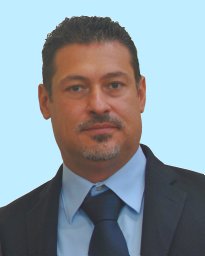
Prof. Giuseppe Carbone
University of Calabria, Italy
Speech Title: Examples of innovative robotic and mechatronic designs with embodied intelligence
Abstract: Robots are widely used for a number of tasks ranging from conventional industrial applications to service robotics. Researchers aim to further spread robots by improving their performance and/or by finding novel potential applications. These challenging goals can be conveniently achieved by carefully and systematically considering them from the early design stages. This presentation outlines a general procedure for conveniently developing innovative robots for specific applications. This is achieved by identifying appropriate quantitative design specifications. It also requires establishing proper simulation models as well as implementing them in specific optimal design procedures. This considers embodied intelligent solutions to fulfill the desired operation with cost-oriented user-friendly features. Illustrative examples are outlined to show the feasibility and practical usefulness of this approach as referring to recent designs such as parallel/hybrid manipulators, humanoid robots, cable-driven robots for conventional or non-conventional applications including healthcare, agriculture, cultural heritage/space exploration.
Biography: Giuseppe Carbone has got his PhD degree in Robotics from the University of Cassino, Italy, in 2004 where he has been Assistant Professor and Key Member of the Laboratory of Robotics and Mechatronics for about 15 years. He has been visiting professor at Universidad Carlos III of Madrid, Beihang University, Waseda University, and several other well-reputed International Research Institutions. From 2018 he has joined University of Calabria, Italy as Associate Professor. From 2020 he is Chair of IFToMM TC on Robotics and Mechatronics. From 2018 to 2021 he has been Visiting professor at Sheffield Hallam University, UK where he served as Senior Lecturer and member of the Executive board of Sheffield Robotics from 2015 to 2017. From 2021 he is also Scientific Director of the International Research Laboratory Intelligent Robotic Systems and Technologies, University of Belgorod with State assignment of Ministry of Science and Higher Education of the Russian Federation under Grant FZWN-2020-0017. Among others he is Treasurer of the IFToMM Italy Member Organization, Editor-in-Chief of Robotica Journal (Cambridge Univ. Press), Section EIC of Journal of Bionic Engineering, MDPI Robotics, MDPI Machines, Technical Editor of IEEE/ASME Transactions on Mechatronics. He has been PI or co-PI of more than 20 projects including 7th European Framework and H2020 funds. He has received more than 30 Best Paper awards and more than 10 International Best Patent awards. His research interests cover aspects of Engineering Design, Mechanics of Robots, Mechanics of Manipulation and Grasp, Mechanics of Machinery with over 500 research paper outputs, 20 patents, and 16 Phd completions (6 ongoing). He has been also member of 20 PhD evaluation Commissions and viva in Italy, Spain, Finland, UK, Romania, Mexico. He has been invited to deliver Keynote speeches and lectures on his research activity at more than 30 International events. He edited/co-edited four books that have been published by Springer and Elsevier International Publishers. h-index 36 n. citations >5000 (source google scholar). Among other honors, he has received two Honoris Causa Doctoral Degrees.
会议简介
★2023年第四届自动化 机械与设计工程国际研讨会(SAMDE 2023)将于2023年11月8日至10日在澳门举行。SAMDE 2023涵盖了广泛的研究主题,涵盖理论和实践,以及系统和形成这些系统的相互作用和相互关联的实体。数字化、数字化和可持续性是近期和未来研究活动中的一些关键词。可持续产品和制造系统的数字化开发和运营/使用将提高全球竞争力、增长和更可持续的产品和生产。人工智能、自动推理、人机协作交互、传感器和自主传感器系统、网络物理控制系统、包括拓扑优化在内的生成性设计、高级仿真和建模、智能自动化、智能材料、材料加工和工厂以及循环经济是SAMDE 2023涵盖的一些重要主题。
关于出版和索引
SAMDE 2020会议已出版,出版社IOP,出版链接请联系微信QQ:2011307354,目前已被EI成功检索
SAMDE 2021会议已见刊,出版社Springer,出版链接:https://link.springer.com/book/9783031099083
SAMDE 2022会议已提交Springer出版,等待检索中
大会所有接受的论文将以会议论文集形式在线出版到Springer 旗下 Mechanisms and Machine Science (ISSN 2211-0992),出版后提交检索机构将被 Ei Compendex, Scopus, Conference Proceedings Citation Index – Science (CPCI-S),(Thomson Reuters, Web of Science),CPCI,, Inspec, INIS (International Nuclear Information System), Chemical Abstracts, NASA Astrophysics Data System, Polymer Library等检索,优秀论文将在国际期刊上发表。
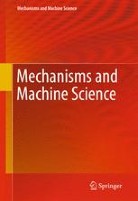
征稿主题
人工智能与工程机械工程测试、自动化公路系统机械冶金、自动采矿机械传动控制、自动视频监控机制、自动化废物管理可变形物体的力学、自动化和机器人机械系统、汽车电子系统及应用、生物机械电子计算机和机器人学、生物工程和生物医学工程机械设计、受生物启发的机器人和系统机电一体化教育、生物力学医学机器人和系统、生物医学和康复工程、修复术和人造器官/ NEMS、桥梁和隧道工程金属切割、建筑节能与绿色建筑——整体形成、机器人学和自动化方法学、铸造微型机电一体化、土木工程微/纳米、分布式、细胞和多机器人、土木工程材料微加工......
更多征稿主题请访问:http://www.samde.org/cfp.html
参会方式
1.作者参会:一篇会议录用文章允许一名作者参会;
2.主讲嘉宾:申请主题演讲,由会务组审核;
3.海报参会:申请海报参会,根据官网模板准备海报,再录制5分钟视频;
4.视频参会:录制个人视频15分钟即可;
4.听众参会:不投稿仅参会,可参与问答,也可演讲及展示。
投稿方式
CMT在线投稿:https://equinocs.springernature.com/service/SAMDE2023
请作者按照官网模板格式进行排版。排版好的论文全文(word+pdf版)发送至CMT在线系统
提交摘要:即只参会做报告,不出版文章;
提交全文:即做参会做报告,并且出版文章;
听众:则不需要提交稿件,注册成功的听众可以参加会议的所有分会;
投稿注意事项:
1. 大会官方语言为英语,必须为全英文稿件,且应具有学术或实用价值,未在国内外学术期刊或会议发表过;
2. 保证文章原创性,未在国内外公开刊物或其它学术会议上发表过。
3. 文章篇幅一般在5-12页之间,不少于5页,含公式图表等,超过5页将收取超页费;
4. 作者可通过Turnitin或其他查询系统自费查重,重复率不得超过20%,由文章重复率引起的被拒稿将由作者自行承担责任;
5. 文章录用:若您的文章被录用,我们将以邮件形式通知您,您将收到以下文件:录用通知、审稿意见表、中文注册表。
联系我们
会议秘书:王老师
会议官网:http://www.samde.org/
会议邮箱:inquiry@samde.org
电话/微信同号:19136117862
QQ咨询:2011307354
了解更多会议详情扫描下方二维码,关注我们:
HKSRA微信公众号 官方会议秘书
SAMDE 2023
11
文本已超出限制,最大输入200字
举报
其他